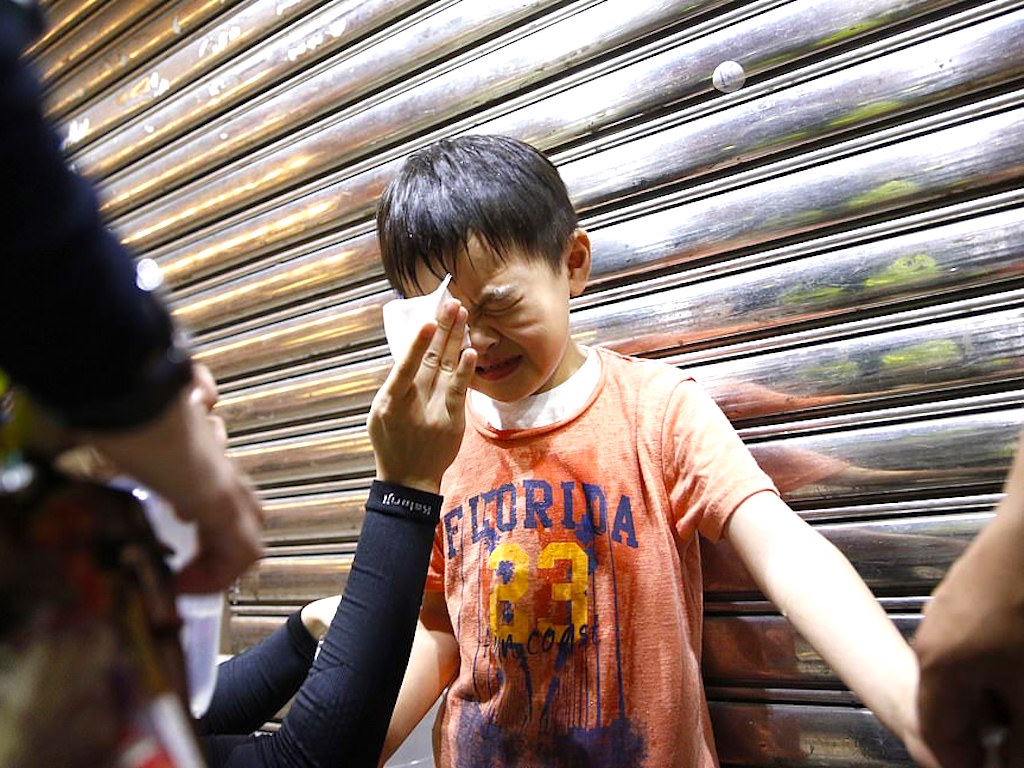4 Mins Read
In recent weeks, Hong Kong residents and visitors have become worried about potential dioxin poisoning, as concerns continue to mount about the effects of an estimated 10,000 rounds of tear gas being fired across the city since June. Prompted by the multiple reports of animal casualties and health complications in children, members of the Hong Kong community have also raised the alarm about air pollution and other environmental impacts of tear gas use. While much of the information is still shrouded in uncertainty, here are some things we do know so far.
A few weeks ago, a frontline reporter for Stand News was diagnosed with Chlorance, a rare skin eruption that is associated with tear gas exposure. While concerned animal welfare groups have tried to ring alarm bells by calling on working police dogs to be taken off the scene to prevent exposure to tear gas compounds in the past, the Chloracne case sparked heightened alarm across the wider population. Concerned citizens of all ages, from young to old, have gathered for multiple demonstrations in the past week to demand an end to the use of tear gas, and to highlight the health impacts they have felt, from skin irritations to headaches.
While tear gas in warfare is banned by the Geneva Convention, there are no international laws preventing authorities from using the weapon domestically in “riot control situations”, although its use on civilians remains controversial. Since the beginning of Hong Kong’s anti-government protests in June, an estimated 10,000 canisters have been fired by the police force. According to a recent analysis by Bloomberg, the use of the chemical has affected as much as 88% of Hong Kong’s 7.4 million population.
In general, post-exposure symptoms range from mild stinging, burning and a tight chest to affecting other mucous membranes, which induces tearing, salivation, headaches and nausea. More chronic after-effects associated with tear gas exposure include persistent psychological trauma and long-term respiratory illnesses.
Animal casualties across Hong Kong have fuelled greater concerns about the adverse impacts of tear gas pollution in the atmosphere to wildlife and the environment. After Kowloon Bay experienced extensive tear gas being fired, a passerby posted a video of dozens of birds lying dead on the roadside, which quickly went viral. It prompted citizens across Hong Kong to circulate images of other animal casualties recorded in vicinities where tear gas rounds had been fired, such as the Chinese University of Hong Kong (CUHK) and Polytechnic University (PolyU). Even in areas that have not been directly affected, online posts have been shared about the alleged link between tear gas use and beached finless porpoises found in Sai Kung, Cheung Chau and Shek O, and squirrels and blue-winged minla birds lying on the roads in Sai Wan and Pokfulam (Discuss HK).
Although it is difficult to establish any concrete link between recorded animal casualties and tear gas, Hong Kong residents remain deeply alert. Veterinary doctor Katriona Bradley from Island Exotics Veterinary Clinic told Green Queen that several pet owners have presented their animals in recent weeks to stay at the clinic to prevent exposure to tear gas that may result in complications.
Much of this concern can be contributed to the confirmation by the Hong Kong police force in a press conference in October that they have purchased canisters made in mainland China that “may contain” dioxin as their overseas stock had dried up. CS, the main substance that these canisters contain, produces a dioxin-like compound under high temperatures, which has been linked to impairing immune and nervous systems, hormone interference and even cancer. While some studies reiterate that these are short-term symptoms, others have suggested that dioxins can persist in human bodies for as long as 22 years.
In an attempt to allay public fears surrounding the gas, authorities have said that they have found no evidence of dioxin poisoning. However, transparent and specific information regarding tear gas remains unavailable. When pressed with questions by journalists and lawmakers about the gas, Health Secretary Sophia Chan remarked that the chemical composition and manufacturing details must stay “secret for operational reasons”.
Given these uncertainties, some have looked to historical cases where tear gas has been employed. In Bahrain, for instance, where unrest as a part of the 2011 Arab uprisings were met with tear gas dispersal tactics, cases of miscarriage, acute respiratory failure and chronic breathing difficulties were documented in depth by a Physicians for Human Rights report. It is difficult to infer links from non-local cases, but what is clear is that residents in Hong Kong must remain vigilant about the range of possible impacts that tear gas might have on our very health and planet.
Lead image courtesy of EPA images.




